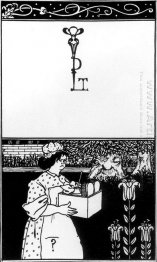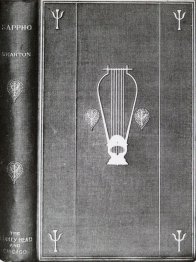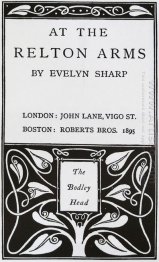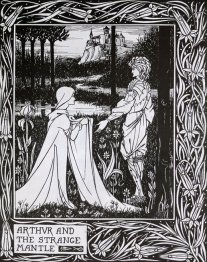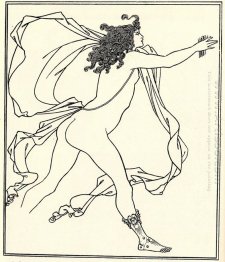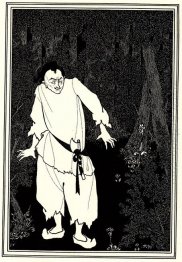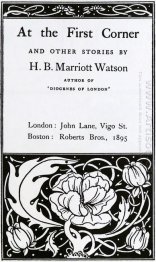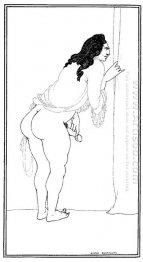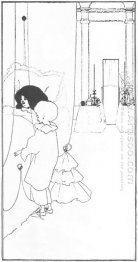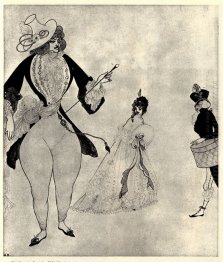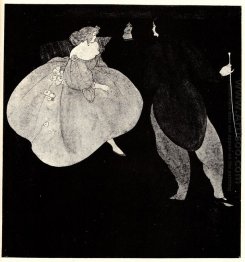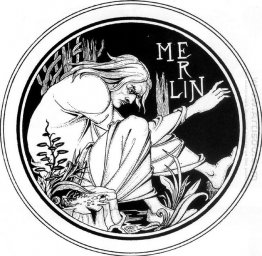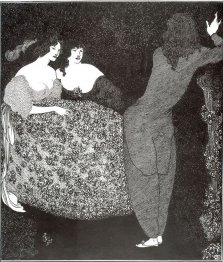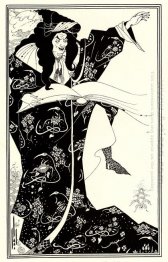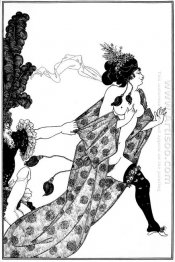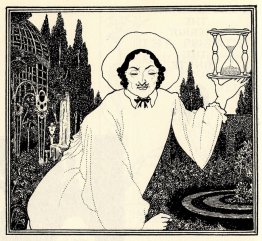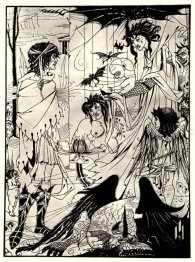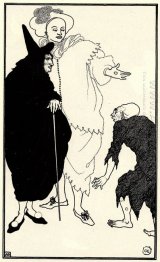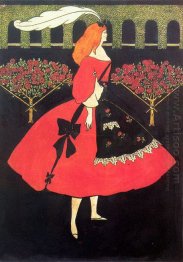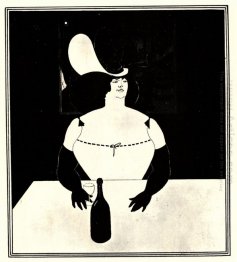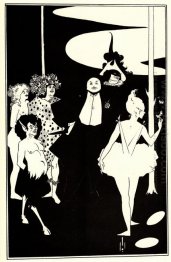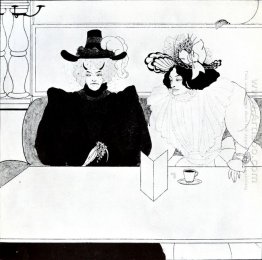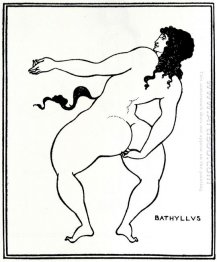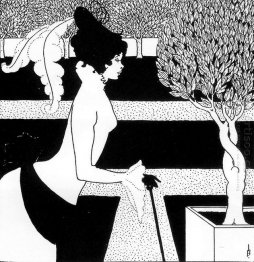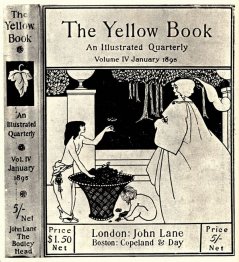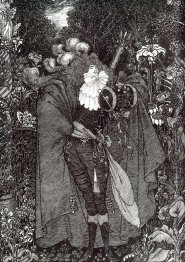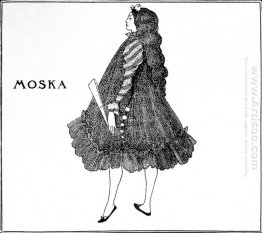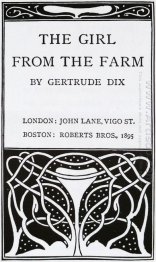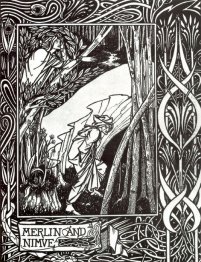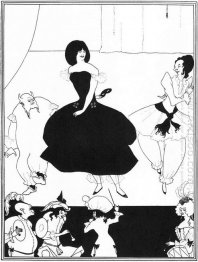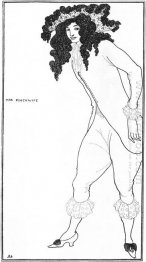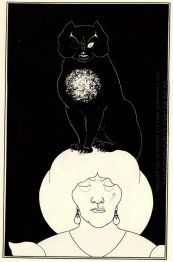Aubrey Beardsley

Aubrey Beardsley was the most controversial artist of the Art Nouveau era, renowned for his dark and perverse images and the grotesque erotica, which were the main themes of his later work. His most famous work includes his illustrations for Aristophanes' Lysistrata and Oscar Wilde's play Salomé.
Aubrey Beardsley was born on 21 August, 1872, in Brighton, England. The family, of middle and upper middle class origins, was often nearly destitute. His father, Vincent, having lost his inherited fortune, worked irregularly at London breweries. Beardsley's mother, Ellen Pitt, provided a slender income by giving piano lessons. Both Beardsley and his sister, Mabel — who later became an actress — were considered artistic and musical prodigies.
The artist's health was always fragile: at the age of nine, he had his first reported attack of tuberculosis, the disease which was to reduce him to an invalid several times and finally cause his death. When in 1884 his mother became too ill to care for him and his sister, they were both packed off to live with an aunt nearby. He attended Bristol Grammar School for four years as a boarder, indulging in his talents by drawing caricatures of his teachers. In 1889, he was sent to London as a clerk in an insurance office. His recovered mother soon followed and remained to nurse her son for the rest of his short life.
Beardsley first published work was "The Valiant," a poem in the June 1885 issue of Past and Present, the Brighton Grammar School magazine. Two years later his first reproduced drawings, a series of sketches, "The Jubilee Cricket Analysis," appeared in the same journal, and he provided the program book illustrations for "The Pay of the Pied Piper," his School's 1888 Christmas entertainment. In 1889 his prose piece "The Story of a Confession Album," was published inTit Bits, a Reader's Digest-type publication of the day. These and other works of juvenilia brought the artist little attention, however; increasingly frustrated by clerking, Beardsley sought entree into the art world. In a famous incident, the artist and his sister went uninvited to see the studio of painter Sir Edward Burne-Jones. They were sent away by a servant, but as they left, Burne-Jones spotted Mabel's red hair and asked them in. Impressed by the Pre-Raphaelite-influenced drawings in Beardsley's portfolio, he recommended that the young artist attend night classes at the Westminister School of Art — the only formal training he ever received.
The years 1893-94 were perhaps the most important in Beardsley's career. He was hard at work producing illustrations and covers for books and periodicals, including his first commission, J. M. Dent's edition of Malory's Morte Darthur (Beardsley had been introduced to the publisher in the summer of 1892). This massive work, issued first in 12 parts and later in volume form, contained over 300 different illustrations, chapter headings, and vignettes. Also in 1893 the artist formed an alliance with the person who was to catapult him to fame and prove his downfall — Oscar Wilde.
In February of that year (1893), Wilde's scandalous play Salome was published in its original French version. An illustration inspired by the drama (reproduced in Joseph Pennell's article, "A New Illustrator: Aubrey Beardsley," in the inaugural issue of The Studio) was admired by Wilde and Beardsley was commissioned 50 guineas to Illustrate the English edition (1894). (Not content with art alone, Beardsley expressed an intense desire to translate the French text after Wilde found the translation by his intimate, Lord Alfred Douglas, to be unsatisfactory.) This assignment was the beginning of celebrity but also of an uneasy, and at times unpleasant, friendship with Wilde, which officially ended when Wilde was tried and convicted of sodomy in 1895.
Beardsley's fame was established for all time when the first volume The Yellow Book appeared in April 1894. This famous quarterly of art and literature, for which Beardsley served as art editor and the American expatriate Henry Harland as literary editor, brought the artist's work to a larger public. It was Beardsley's starling black-and-white drawings, title-pages, and covers which, combined with the writings of the so-called "decadents," a unique format, and publisher John Lane's remarkable marketing strategies, made the journal an overnight sensation. Although well received by much of the public, The Yellow Book was attacked by critics as indecent. So strong was the perceived link between Beardsley, Wilde, and The Yellow Book that Beardsley was dismissed in April 1895 from his post as art editor following Wilde's arrest, even though Wilde had in fact never contributed to the magazine.
Soon after he was let go from The Yellow Book, Beardsley was approached by Leonard Smithers, a publisher intent on creating a rival periodical. Though (or perhaps because) Smithers was known for publishing pornography and erotica, Beardsley jumped at the chance, and so The Savoy was created, with Arthur Symons as editor. Beardsley found in The Savoy an outlet for his writings as well as art. "Under the Hill" (his version of the Tannhauser legend) and "The Ballad of a Barber" both appeared in numbers of The Savoy. When publication ceased in December 1896, Beardsley continued to illustrate other authors' works for Smithers. Among these volumes were editions of Pope's The Rape of the Lock, Ben Jonson's Volpone, and The Lysistrata of Aristophanes). Smithers also issued Beardsley's own A Book of Fifty Drawings, the first collected album of his work.
In the hope that the climate might improve his deteriorated condition Beardsley followed doctor's advice and traveled to the south of France. Realizing his short time left to live, he converted to Catholicism. During the night of 15-16 March 1898, exiled in the same country as Oscar Wilde, he died at the age of 25.




